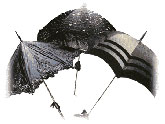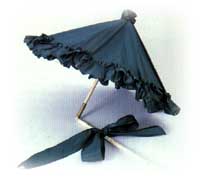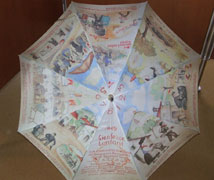  |
|
 Museo dell'Ombrello e del Parasole Via Golf Panorama,3 28836 Gignese (VB) Tel. +39 0323 89622 Tel. +39 0323 208064 (direct) |
|
The simple functionality of an accessory as the umbrella makes it difficult to reconcile his practical use with a source that grazes the myth; still, a few items of our daily lives can boast so ancient and legendary roots. The only thing certain is the non-Western origin: China, India and Egypt themselves indeed country-cradle of parasol, each with more than valid reasons. These "claims" allow us to add another as sure a story devoid of certainties: the umbrella is, since its appearance, connected to the symbolic representation of power, when not even attribute of the deity. Since the 12th century BC, the ceremonial umbrella belonged to the insignia of the Emperor of China and this remained for about thirty-two years, until the disappearance of the Celestial Empire. At about the same time, the Persian Kings could, unique among mortals, shelter from the Sun by an umbrella, supported by some dignitary; more democratically in Egypt is granted this privilege to all persons of noble origin.
 |
 |
 |
In this country was born, perhaps, the most beautiful myth, the deepest symbolism tied to umbrella: the goddess Nut was often represented in the form of a parasol, with arched body to cover the Earth, in the Act of love and protection. The strong meaning of a status symbol as royal prerogative or of powers, taken from umbrella, explains his appearance in contemporary religious imagery. As in Egypt, in India is associated with the goddesses of fertility and harvest or, more broadly, of death and rebirth: in its fifth incarnation, Vishnu had brought back from the underworld an umbrella, rain dispenser. To the sphere of the myth we have to the introduction in the Western world of our accessory, which appears in Greece by binding to the worship of Dionysus (God of probable Indian origin), but also of dee as Pallas and Persephone, who among their faithful were mostly women.
It is women who, in festivals dedicated to these deities, they shelter in their honor with a parasol, passed also in the 3rd century BC in the Roman world, where it is described by poets such as delicate and precious object in female hands. It would seem then to have sketched out a full story: symbol of power, human and divine, and object of seduction. Still, among the many values and signs of civilization wiped by the disappearance of the Roman Empire, there was also the umbrella, which remained on track in the "dark ages", if not for its survival in Catholic worship, initially as a Pontifical insignia, then in liturgical use. Totally unknown to antiquity was therefore the primary utilitarian function of umbrella, to cover. Cloaks, hoods and hats of skin they resolved the problem of the rain in the classical world and the middle ages.




